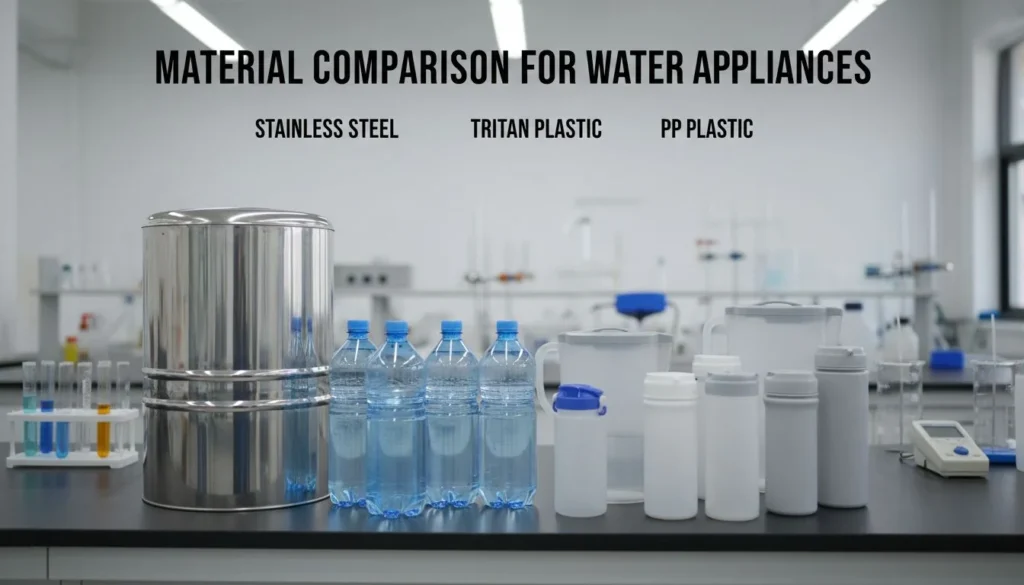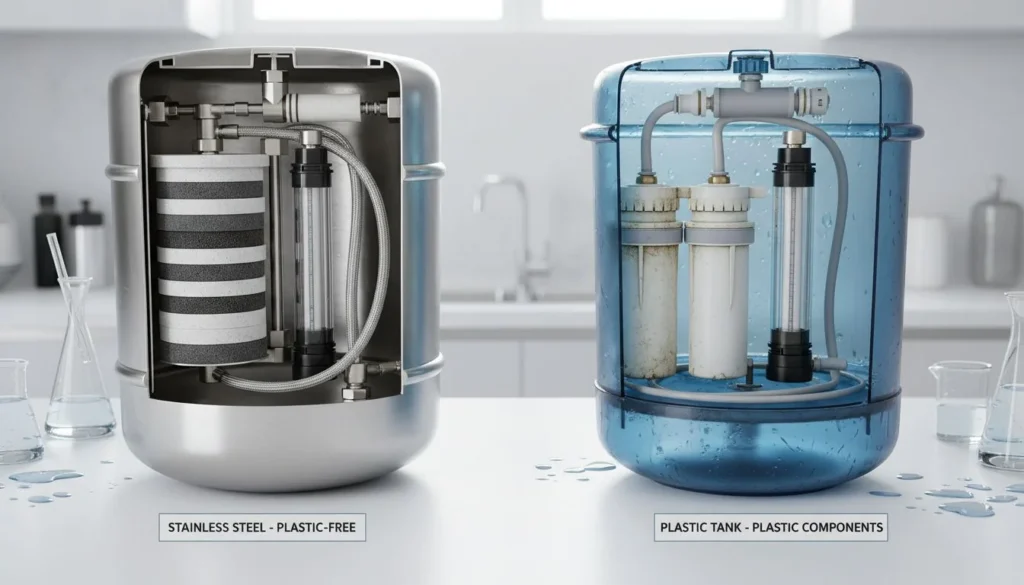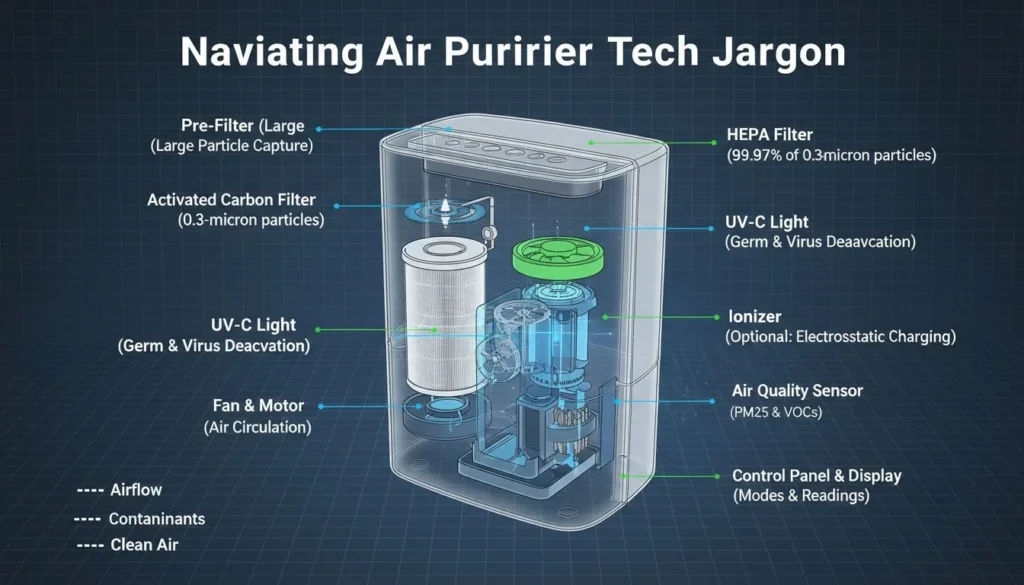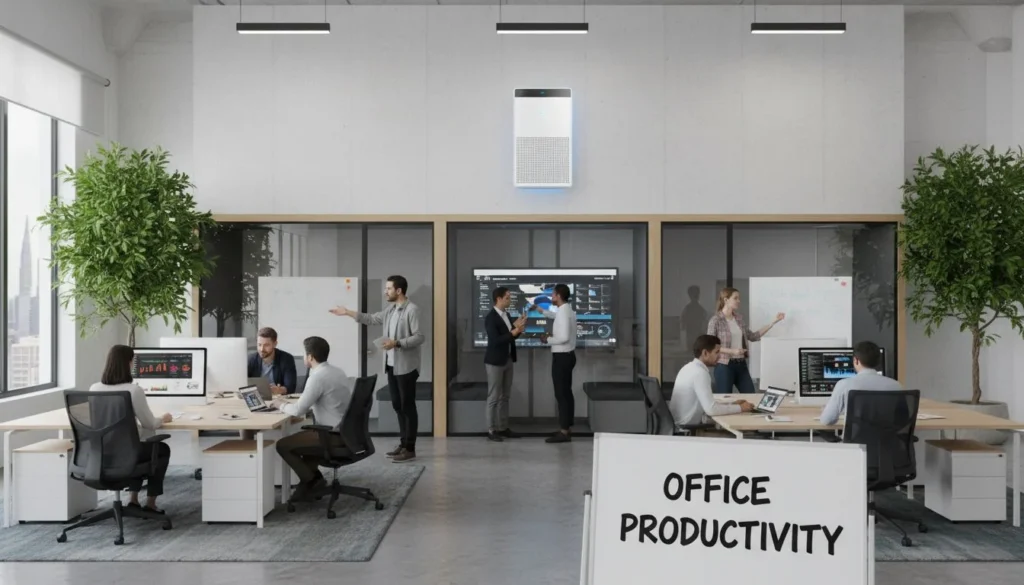
Trasferire la produzione dalla Cina agli Stati Uniti? È un viaggio pieno di svolte inaspettate. Questo trasferimento probabilmente trasforma la vostra attività.
La delocalizzazione della produzione dalla Cina agli Stati Uniti comporta diverse fasi importanti. Le aziende hanno bisogno di nuove catene di approvvigionamento. La tutela della proprietà intellettuale rimane fondamentale. È importante anche lavorare con specialisti della logistica esperti. Queste azioni aiutano le aziende ad adattarsi ai cambiamenti del mercato globale. Le mutevoli maree del mercato richiedono un adattamento.
Riflettendo sul mio percorso nel settore della purificazione dell'aria, la produzione in movimento è come l'assemblaggio di un puzzle. Ogni pezzo è fondamentale. L'idea di trasferire le attività sembra scoraggiante. La suddivisione in fasi gestibili lo rende possibile. Individuare fornitori affidabili negli Stati Uniti o in regioni vicine come il Messico è stato fondamentale per me. Ho imparato che mantenere una strategia Cina+1 è fondamentale. Avere un fornitore alternativo al di fuori della Cina può ridurre i rischi.
Garantire tutti i diritti di proprietà intellettuale dei prodotti negli Stati Uniti mi ha dato tranquillità. Mi sono reso conto dell'importanza di trovare partner che condividano il mio impegno per l'innovazione e la sostenibilità. I partner esperti sono davvero importanti. La collaborazione ha fatto la differenza quando abbiamo integrato la tecnologia Decibel Cancellation™.
Nonostante le sfide, vale la pena aspettare che la catena di approvvigionamento statunitense maturi. Questa pazienza getta solide basi per la crescita futura.
La delocalizzazione della produzione aumenta i costi operativi.Vero
Spostare la produzione negli Stati Uniti spesso comporta costi di manodopera e di regolamentazione più elevati.
La collaborazione con le aziende di logistica non è necessaria.Falso
Partner logistici esperti sono fondamentali per gestire le transizioni della catena di approvvigionamento.
Come si può creare una catena di fornitura alternativa in Nord America?
Creare una catena di approvvigionamento in Nord America sembra una sfida. Il viaggio ha davvero un grande valore. Voglio condividere alcuni passi che hanno funzionato per me. Forse questi passi possono aiutare anche voi.
Per creare una nuova catena di fornitura in Nord America, iniziate a cercare i fornitori locali. Proteggete la vostra proprietà intellettuale per tenerla al sicuro. Costruire relazioni solide con i partner chiave. La logistica e la conformità sono importanti per migliorare l'efficienza. Sono anche importanti per costruire la resilienza.
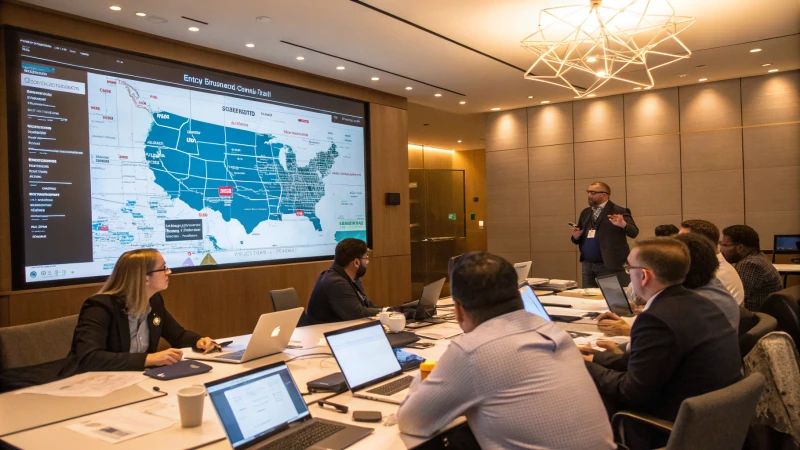
Comprendere l'ecosistema di approvvigionamento locale
Ho iniziato il viaggio per creare una catena di approvvigionamento in Nord America. È stato come esplorare acque sconosciute. Ma col tempo ho imparato le basi. Ho iniziato trovando possibili fornitori negli Stati Uniti, in Messico o in Canada che rispondessero alle mie esigenze. Ho contattato i fornitori locali associazioni di categoria1 e reti commerciali per entrare in contatto con partner affidabili. È come stringere una nuova amicizia: la fiducia è essenziale.
Proprietà intellettuale e conformità
Proteggere la proprietà intellettuale del mio prodotto era molto importante. Mi sono reso conto che ottenere brevetti negli Stati Uniti e in Canada era fondamentale. In questo modo proteggevo le mie idee dalla copia. All'inizio, le norme di conformità locali sembravano confuse. Tuttavia, la loro comprensione era necessaria per navigare senza problemi nelle questioni legali.
| Passi chiave | Descrizione |
|---|---|
| IP Protezione | Assicuratevi i brevetti per i vostri prodotti in Nord America. |
| Conformità | Familiarizzare con le leggi e le normative locali. |
Partenariati strategici e logistica
Lavorare con aziende esperte come HisoAir ha reso le cose più facili. Conoscevano bene i mercati asiatici e nordamericani e mi hanno aiutato a trovare fonti di componenti più economiche e a gestire una logistica difficile.
Considerazioni chiave:
- Sviluppare una rete di fornitori alternativi, tra cui quelli in grado di produrre SKD componenti.
- Garantire una logistica efficiente esplorando partnership con società di logistica che conoscono la geografia e le normative nordamericane.
Sfruttare la tecnologia per l'efficienza della catena di fornitura
Utilizzo di un sistema avanzato software di gestione della catena di fornitura2 ha cambiato notevolmente le cose. Ha aumentato la trasparenza e ha permesso di tracciare le spedizioni in tempo reale, consentendo di prevedere potenziali interruzioni prima che si verifichino.
| Tecnologie | Vantaggi |
|---|---|
| Software SCM | Migliora la visibilità e l'efficienza |
| Soluzioni IoT | Traccia le spedizioni e gli inventari |
Anticipare le tendenze future
Il panorama produttivo del Nord America è in continua evoluzione, proprio come la vita. La flessibilità aiuta ad adattarsi a cambiamenti come l'automazione e le nuove esigenze dei consumatori.
Una visione a lungo termine e l'investimento in relazioni costruiscono una rete forte che sopravvive agli sconvolgimenti globali.
Evitare un'eccessiva dipendenza da un'unica fonte è fondamentale per garantire la stabilità in un mercato incerto.
Esplora come tendenze future3 potrebbe avere un impatto sulla vostra strategia di supply chain per rimanere all'avanguardia.
I fornitori locali sono essenziali per le catene di approvvigionamento nordamericane.Vero
I fornitori locali offrono vantaggi di prossimità, riducendo i tempi e i costi.
I brevetti non sono necessari per la protezione della proprietà intellettuale in Nord America.Falso
I brevetti sono fondamentali per proteggere le innovazioni dalle violazioni negli Stati Uniti e in Canada.
Qual è l'impatto della proprietà intellettuale sulla delocalizzazione della produzione?
La produzione di un trasloco non si limita a imballare le scatole. Si tratta di proteggere ciò che rende speciale la vostra azienda. Questa fase è importante.
La proprietà intellettuale è molto importante quando si muove la produzione. Protegge le nuove idee e mantiene le aziende all'avanguardia. Aiuta le transizioni mantenendo al sicuro invenzioni e marchi. Questa sicurezza è fondamentale durante i cambiamenti strategici.

Proteggere le innovazioni attraverso i confini
Quando si prende in considerazione la possibilità di spostare la produzione, le aziende devono assicurarsi che la loro proprietà intellettuale4 i diritti siano garantiti sia nella sede originaria che in quella nuova. Ciò significa valutare il panorama brevettuale per assicurarsi che tutte le innovazioni siano protette dalle leggi giurisdizionali pertinenti. Ad esempio, un'azienda che trasferisce la produzione dalla Cina al Messico deve esaminare i propri brevetti in entrambi i Paesi.
| Giurisdizione | Validità del brevetto | Costo di registrazione |
|---|---|---|
| Cina | 20 anni | Moderato |
| Messico | 20 anni | Alto |
Mantenere il vantaggio competitivo
Ho sempre pensato che per essere all'avanguardia non basta essere i primi a innovare. Proteggere le innovazioni è fondamentale. Durante un trasloco, mantenere questo vantaggio diventa ancora più vitale. Si tratta di assicurarsi che i marchi e i diritti d'autore siano registrati correttamente, impedendo così ai concorrenti di imitare o utilizzare le innovazioni del marchio. In settori come quello tecnologico o farmaceutico, dove l'innovazione è rapida, proprietà intellettuale5 garantisce che le aziende continuino a beneficiare dei loro investimenti nella ricerca anche dopo il trasloco.
Agevolare il processo di transizione
Manipolazione IP Quando ci si trasferisce sembra di risolvere un puzzle alla cieca. Ho scoperto presto che una transizione senza intoppi dipende in larga misura dall'allineamento IP strategie con piani di spostamento. Comprendere la realtà locale IP è fondamentale. Spesso è necessario coinvolgere anche esperti locali che conoscono a fondo queste regole.
| Fase della strategia | Livello di importanza |
|---|---|
| Locale IP Familiarizzazione con la legge | Alto |
| Competenza legale transfrontaliera | Critico |
| Aggiornamenti tempestivi della registrazione | Essenziale |
Garantire la proprietà intellettuale sia nel Paese d'origine che in quello di destinazione non è solo un compito da portare a termine: si tratta di proteggere il patrimonio ed evitare problemi legali. Aiuta a costruire una solida base per il successo futuro. Ciò sottolinea l'importanza di avere una forte IP strategia di gestione6 quando si pensa di trasferirsi.
I diritti di proprietà intellettuale sono necessari solo nel luogo di origine.Falso
I diritti di proprietà intellettuale devono essere garantiti sia nelle sedi originarie che in quelle nuove.
La delocalizzazione richiede l'armonizzazione della strategia IP con i piani.Vero
L'allineamento della strategia di proprietà intellettuale con la delocalizzazione garantisce la protezione e la transizione senza problemi.
Quali sono i migliori paesi per la produzione al di fuori della Cina?
Avete mai pensato ad altri Paesi in cui produrre i vostri prodotti invece della Cina? Voglio condividere alcuni pensieri e insegnamenti tratti dalla mia esperienza di scelte globali.
Vietnam, India e Messico stanno diventando le scelte migliori per la produzione al posto della Cina. La loro manodopera a basso costo attrae molte aziende. Le infrastrutture di questi Paesi stanno migliorando. Anche gli accordi commerciali strategici li aiutano. Queste nazioni offrono varie opportunità in diversi settori.
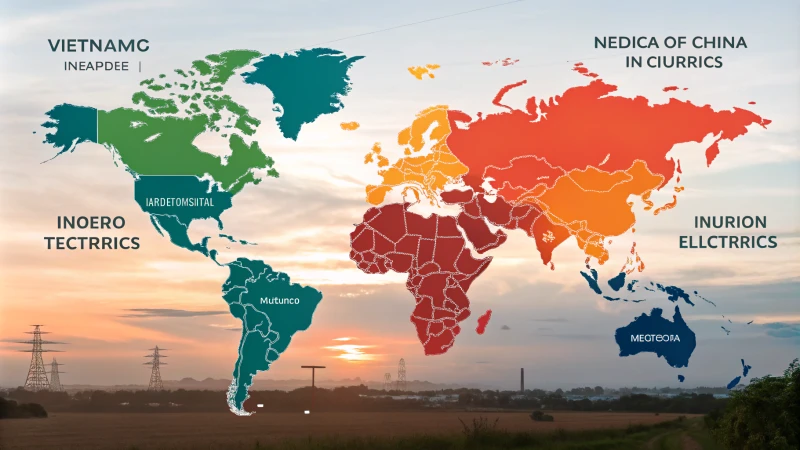
Vietnam: Una stella nascente nel sud-est asiatico
Il Vietnam è diventato un scelta popolare7 grazie alla sua vicinanza alla Cina, ai costi competitivi della manodopera e alle infrastrutture in crescita. Grazie ai numerosi accordi di libero scambio, tra cui l'accordo di libero scambio UE-Vietnam, il Vietnam rappresenta un'ottima opportunità per i produttori.
| Fattore | Dettagli |
|---|---|
| Costo del lavoro | Competitivo e inferiore a quello di molti paesi asiatici |
| Infrastrutture | Rapido miglioramento grazie agli investimenti in porti e autostrade |
| Accordi commerciali | Ampio accesso a diversi mercati globali |
India: Un polo tecnologico e tessile
La vasta forza lavoro e l'esperienza dell'India nel settore tessile e tecnologico ne fanno un'alternativa interessante. L'iniziativa "Make in India" incoraggia gli investimenti stranieri e le capacità tecnologiche del Paese offrono ulteriori vantaggi.
- Forza lavoro: Pool di manodopera qualificata con particolare attenzione all'ingegneria e all'IT
- Supporto governativo: Politiche per promuovere la crescita del settore manifatturiero
- Sfide: Miglioramenti infrastrutturali necessari in alcune regioni
Messico: Opportunità di nearshoring per il mercato statunitense
Il Messico offre vantaggi strategici per le aziende che intendono produzione nearshore8 più vicino agli Stati Uniti. Beneficia dell'accordo USMCA, che facilita le relazioni commerciali.
- Prossimità geografica: Vicino ai principali mercati statunitensi
- Vantaggi commerciali: Condizioni favorevoli nell'ambito dell'USMCA
- Base industriale: Forti settori dell'automotive e dell'elettronica
Thailandia e Malesia: Basi produttive diversificate
Entrambi i Paesi vantano settori industriali ben sviluppati. L'industria automobilistica tailandese è degna di nota, mentre la Malesia eccelle nell'elettronica. Questi Paesi offrono ambienti stabili per la diversificazione della produzione.
- Thailandia: Conosciuta per la produzione di automobili e macchinari
- Malesia: L'elettronica e i prodotti elettrici sono le esportazioni principali
- Ambiente commerciale: Generalmente favorevole con incentivi governativi
Sebbene questi Paesi rappresentino valide alternative alla Cina, le imprese devono considerare fattori quali la stabilità politica, la logistica e le esigenze specifiche del settore quando scelgono una nuova base produttiva. Esplorare confronti dettagliati9 può aiutare a prendere decisioni informate su dove stabilire le prossime attività produttive.
Il costo del lavoro in Vietnam è superiore a quello della Cina.Falso
Il Vietnam offre un costo del lavoro competitivo, inferiore a quello di molti Paesi asiatici.
In India manca il sostegno del governo per la crescita del settore manifatturiero.Falso
Non è disponibile alcuna spiegazione.
Quali sono i vantaggi a lungo termine del trasferimento della produzione negli Stati Uniti?
Ho sempre creduto fermamente nella necessità di riportare la produzione a casa. Questa idea non è solo una parola di fantasia. È un piano reale che cambia davvero le aziende in meglio. Ma in che modo lo spostamento della produzione negli Stati Uniti aiuta le aziende nel tempo?
Il trasferimento della produzione negli Stati Uniti comporta vantaggi a lungo termine. Permette un migliore controllo della produzione. Questo spostamento rafforza la resilienza della catena di fornitura. Le opportunità di lavoro aumentano e aiutano le comunità locali. I consumatori vogliono prodotti fabbricati nelle vicinanze. Sono davvero interessati ai prodotti locali.

Controllo dettagliato e verifica della qualità
In base alla mia esperienza, avere la produzione vicina significa osservare da vicino ogni dettaglio. Questa attenzione si traduce in prodotti migliori e operazioni più fluide. Ho imparato che questo è molto prezioso. Immaginate di risolvere i problemi non appena si presentano, senza aspettare il feedback dell'estero. È come stare in fabbrica, senza dover viaggiare.
Le aziende possono gestire direttamente ogni fase della produzione10garantendo il rispetto degli standard e una risposta più rapida ai problemi.
Costruire catene di approvvigionamento più solide
Ricordo chiaramente come la pandemia abbia mostrato la debolezza delle catene di approvvigionamento globali. È stato un grande campanello d'allarme. Riportando la produzione in patria, riduciamo questi rischi e ci riprendiamo più rapidamente dai problemi. È come quando un cambiamento rapido ha salvato un progetto, ma su scala più ampia.
Una catena di fornitura resiliente è in grado di adattarsi più rapidamente ai cambiamenti del mercato, assicurando una coerenza disponibilità del prodotto11.
Crescita dell'economia e creazione di posti di lavoro
Ho visto il reshoring portare nuova linfa alle economie locali. Crea davvero posti di lavoro, spesso buoni posti di lavoro che aiutano le famiglie e le comunità. Inoltre, genera denaro per le tasse che sostiene importanti servizi pubblici.
Questa attività economica genera anche un gettito fiscale che può essere reinvestito in infrastrutture e in servizi pubblici12.
| Benefici | Impatto |
|---|---|
| Controllo qualità migliorato | Controllo più rigoroso dei processi di produzione |
| Resilienza della catena di approvvigionamento | Riduzione della dipendenza dai fornitori globali |
| Crescita economica | Creazione di posti di lavoro e aumento degli investimenti locali |
Soddisfare le scelte dei consumatori
Ho notato che i consumatori preferiscono i prodotti "Made in USA". Le persone amano sapere che i loro acquisti sostengono i posti di lavoro locali e il lavoro di qualità.
L'allineamento con questi valori non solo aumenta la fedeltà al marchio, ma ci aiuta anche a distinguerci in un mercato affollato, aumentando il numero di persone che si sono distinte. quota di mercato13.
Salvaguardia delle idee e delle innovazioni
La sicurezza delle nostre innovazioni è fondamentale. Questo è importante soprattutto quando si investe in ricerca e sviluppo.
Producendo localmente, proteggo la nostra proprietà intellettuale dall'essere copiata.
Questa tranquillità è molto importante per le industrie che dipendono dalla tecnologia avanzata.
La produzione nazionale riduce il rischio di IP furto, assicurando che le innovazioni rimangano sicure mentre ci si concentra su nuovi tecnologie14.
Il reshoring migliora il controllo della qualità dei prodotti.Vero
La vicinanza consente alle aziende di supervisionare la produzione, garantendo standard più elevati.
Il reshoring aumenta la dipendenza dai fornitori globali.Falso
Riduce la dipendenza producendo più vicino a casa, migliorando la resilienza della catena di approvvigionamento.
Conclusione
Spostare la produzione dalla Cina agli Stati Uniti significa assicurarsi i fornitori, proteggere la proprietà intellettuale e adattare la logistica, per migliorare il controllo della qualità e sostenere le economie locali.
-
Rivolgetevi alle associazioni di categoria per ottenere informazioni sui fornitori locali. ↩
-
Scoprite un software all'avanguardia per migliorare la visibilità della supply chain. ↩
-
Rimanere informati sulle tendenze che potrebbero avere un impatto sulle strategie della supply chain. ↩
-
Scoprite come la protezione della proprietà intellettuale protegge le innovazioni durante le transizioni aziendali. ↩
-
Scoprite come la proprietà intellettuale fornisce un vantaggio competitivo, soprattutto nei settori tecnologici. ↩
-
Scoprite le strategie per gestire efficacemente la proprietà intellettuale durante i trasferimenti transfrontalieri. ↩
-
Scoprite perché il Vietnam sta diventando una destinazione privilegiata per i produttori che vogliono diversificarsi dalla Cina. ↩
-
Scoprite i vantaggi del nearshoring in Messico per accedere più facilmente al mercato statunitense. ↩
-
Scoprite come questi Paesi si posizionano l'uno rispetto all'altro in termini di potenziale produttivo. ↩
-
Scoprite i modi specifici in cui il reshoring migliora la qualità dei prodotti grazie a una migliore gestione dei processi produttivi. ↩
-
Scoprite come il reshoring contribuisca a rendere la catena di fornitura più forte e affidabile, riducendo la dipendenza dall'estero. ↩
-
Scoprite come il ritorno della produzione in patria stimoli le economie locali attraverso la creazione di posti di lavoro e gli investimenti. ↩
-
Capire perché i consumatori preferiscono i beni prodotti localmente e come questo possa giovare alla vostra attività. ↩
-
Scoprite come la produzione nazionale contribuisce a salvaguardare la proprietà intellettuale della vostra azienda. ↩


